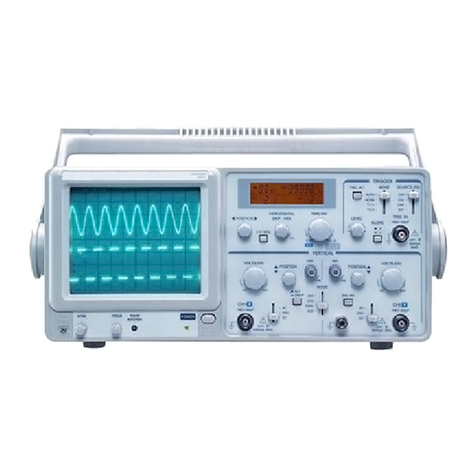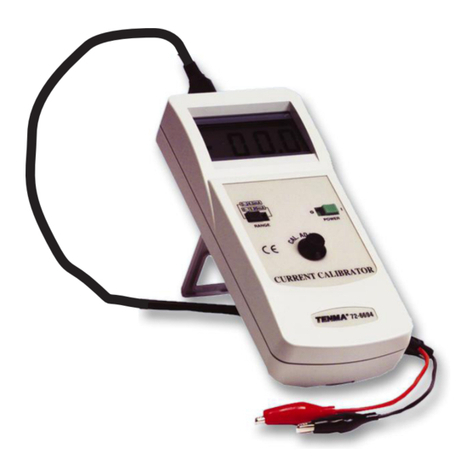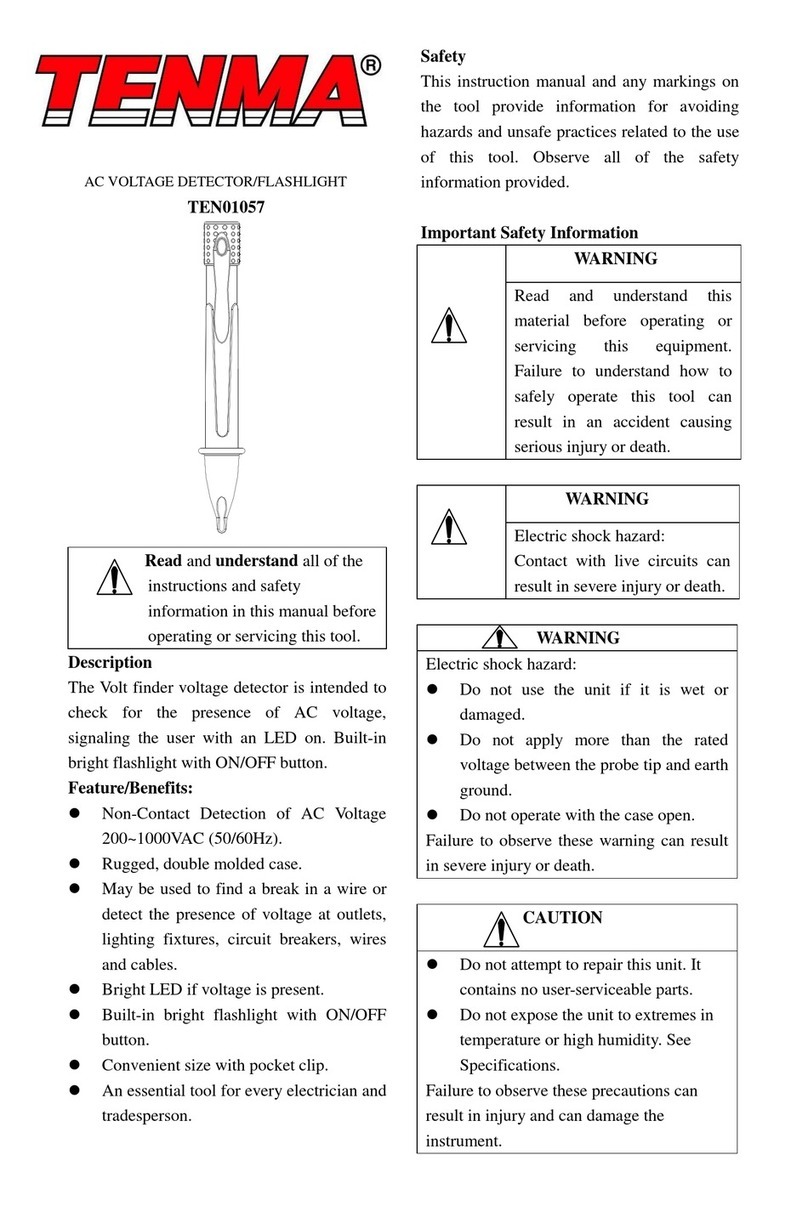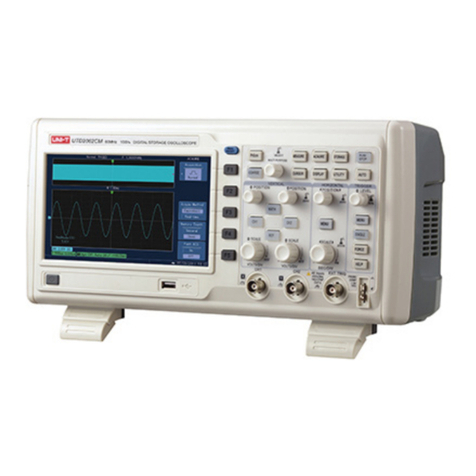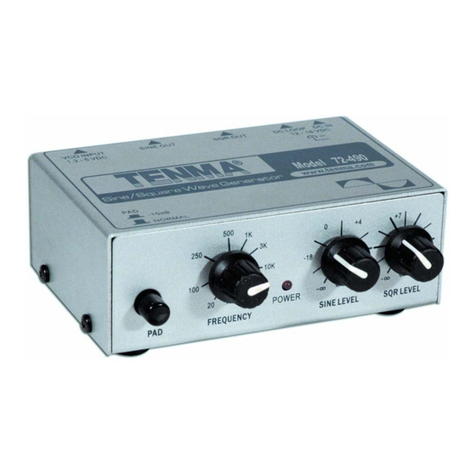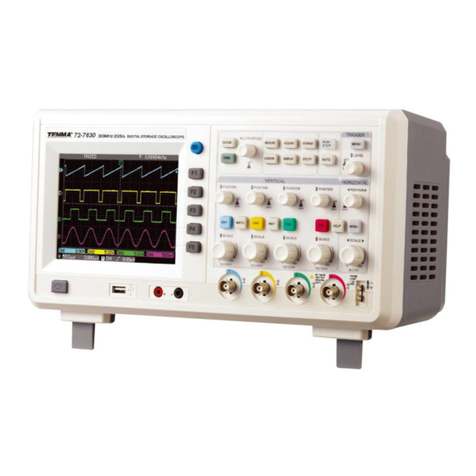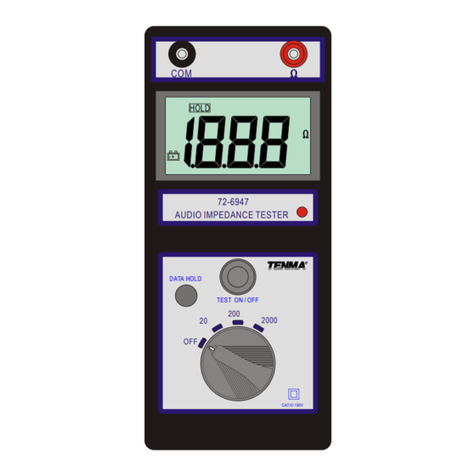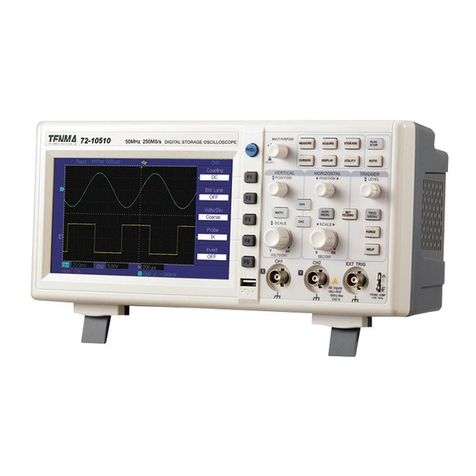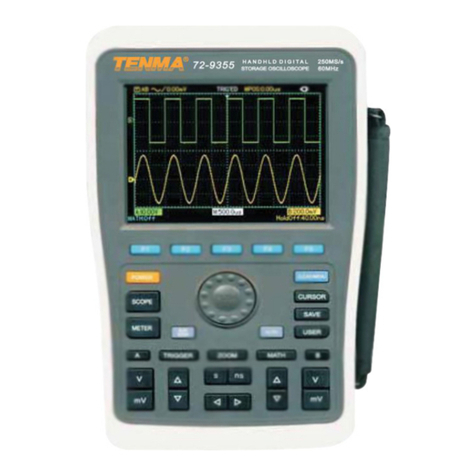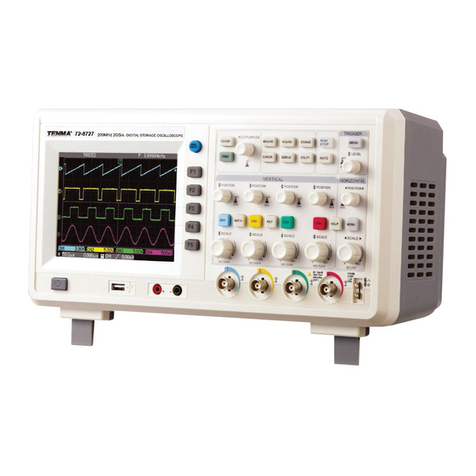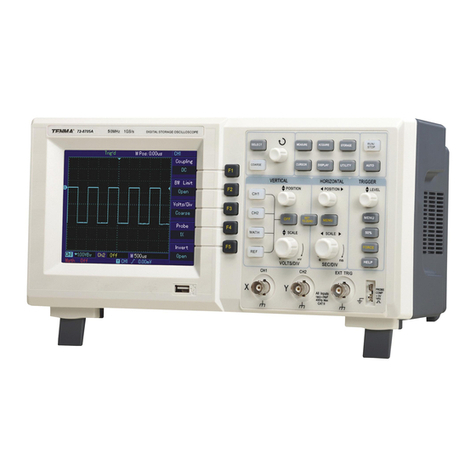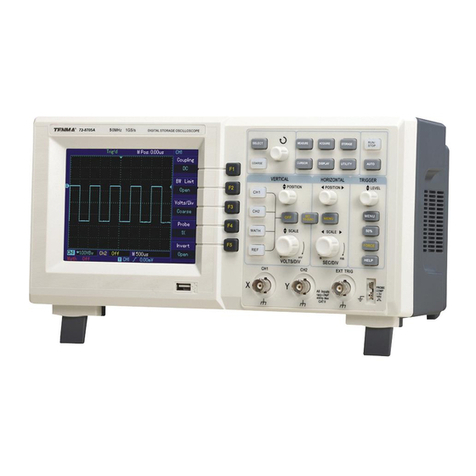
Page <2> V1.007/12/23
Newark.com/exclusive-brands
Farnell.com/exclusive-brands
Element14.com/exclusive-brands
1. Overview
The Insulation Resistance Tester is designed with brand-new design and combination of massive integrated and digital circuits;
it can measure insulation resistance, AC voltage, etc. and enjoys high degree of accuracy, stable performance, easy operation
and reliability. It is used for insulation resistance measurement for insulation materials and various kinds of electric equipment
such as transformer, electric machines, cables, switches, electrical appliances, a ideal tool for electric equipment maintenance,
testing and inspection.
2. Safety Information
It is designed and manufactured in compliance with: IEC61010-1 CATlll 600V, Double Insulation and Pollution Degree 2
standards. Operate as specied in the manual, otherwise the protection oered by the tester would be impaired.
Compliance Standards: EN61010-1:2010; EN61010-2-030:2010; EN61557-1:2007; EN61557-2:2007; EN61326-1:2013;
EN61326-2-2:2013
Safety Symbols 1
Danger Identies conditions and actions that may pose hazard to the users.
Warning Alerts users to avoid electric shock.
Caution Identies conditions and actions that may cause damage to the instrument of aect accurate
measurement.
Danger
• Do not measure any AC circuit with voltages above 750V.
• Do not measure in ammable places. Spark may cause explosion.
• In case that the surface of the instrument is wet or the operator’s hands are wet, please do not operate this instrument.
• Do not touch the electric conduction parts of test leads when testing.
• Do not open the battery cover when testing.
• When insulation resistance is measured, do not touch the electric wire under test.
Warning
• Stop using the instrument if it works abnormally. For example: the equipment is damaged or metal parts are exposed.
• Operator must be careful when voltage exceeds 33Vrms, 46.7Vacrms of 70V DC. Such kinds of voltage may cause
electric shock.
• Do not replace the battery in wet conditions.
• Ensure that all test wires are connected to the test ports of tester securely.
• When opening the battery cover, make sure that the instrument is turned o.
• Please read carefully and understand the manual before using the instrument.
• Use the instrument as specied in the manual at any time and store the manual for further reference.
• When the instrument is testing, misoperation may lead to an accident and damage of equipment.
Caution
• Before testing insulation resistance, the circuit under test must be completely discharged and completely isolated with
other power circuits.
• In case the test pen is damaged and needs to be replaced , use only the test leads with the same model or identical
electrical specications.
• When the battery indicator ( ) indicates that the power runs out, do not use the instrument. Remove the battery and store
the instrument if it is not in use for a long time.
• Do not store or use this instrument in heat, humid, ammable, explosive and strong electromagnetic eld environments.

